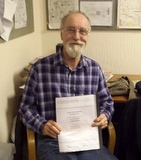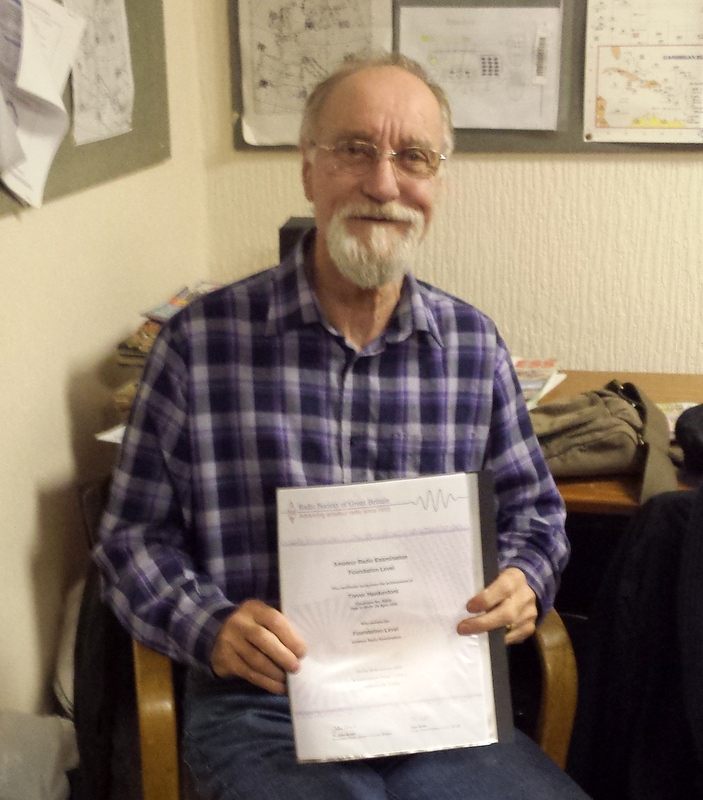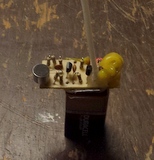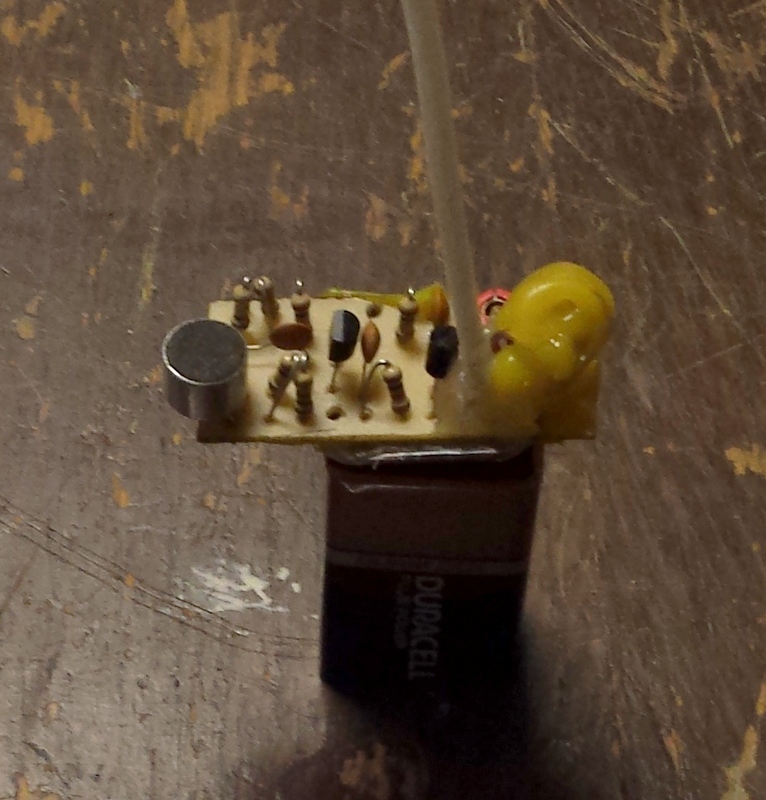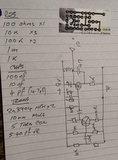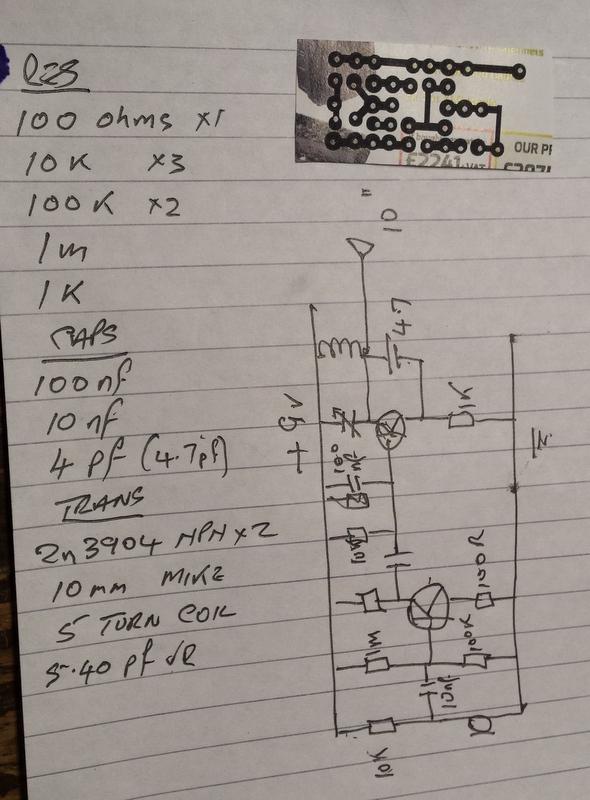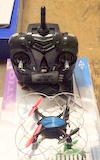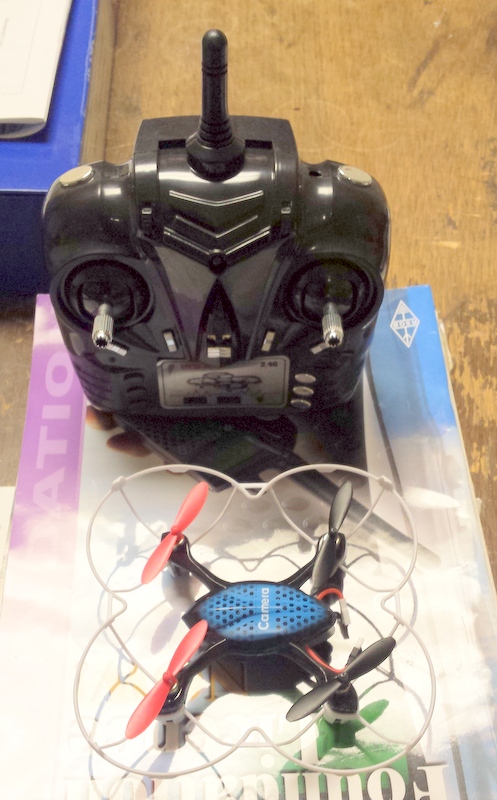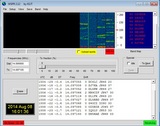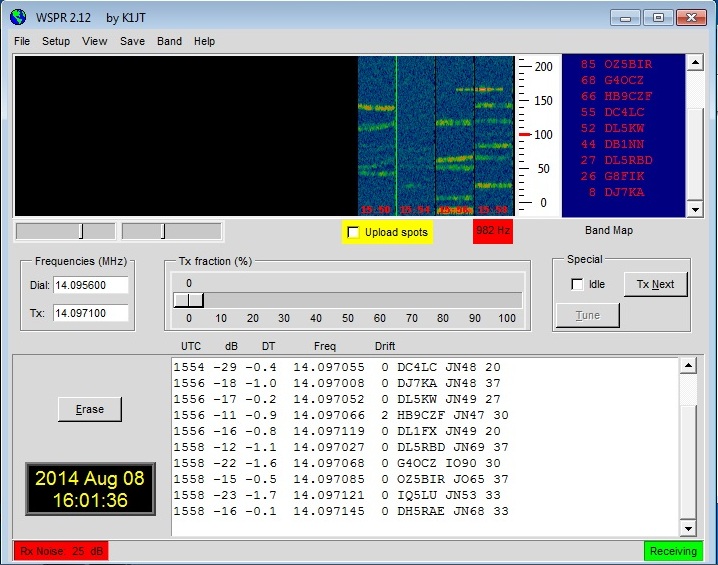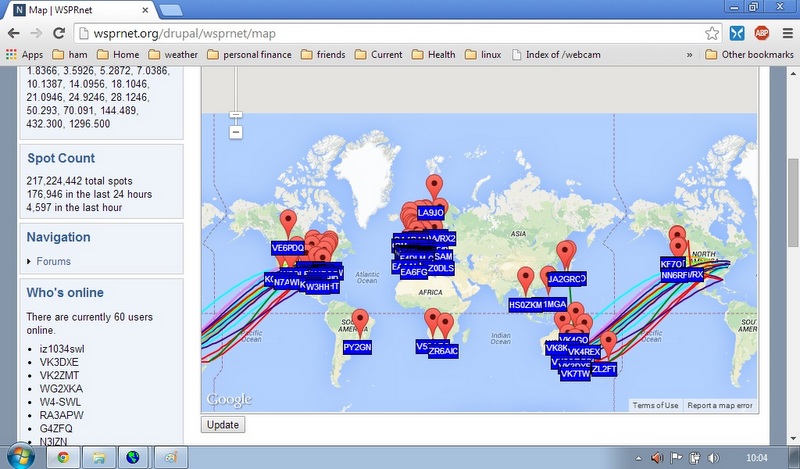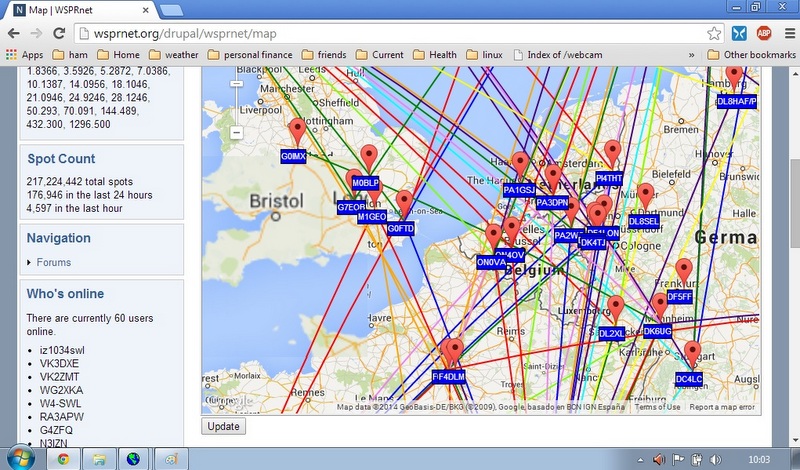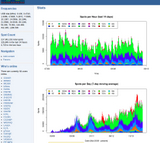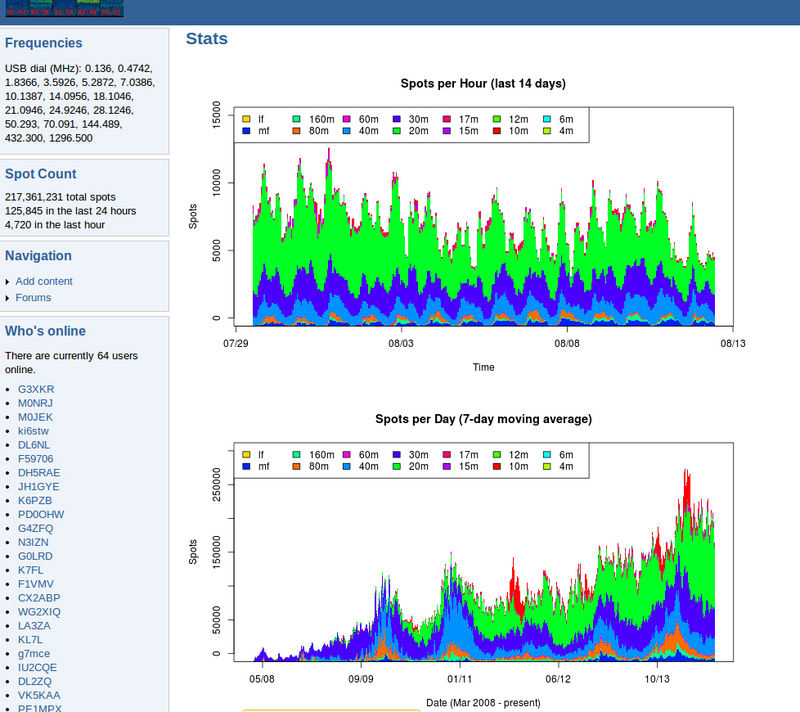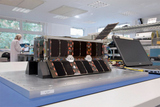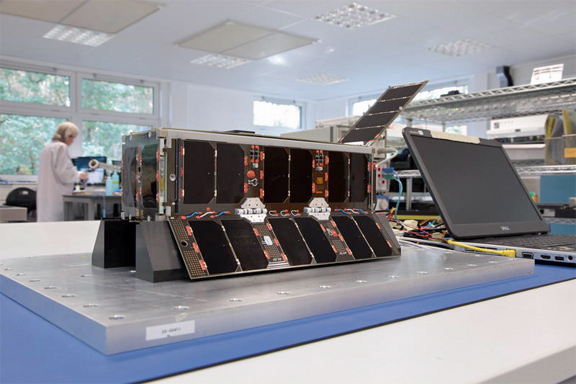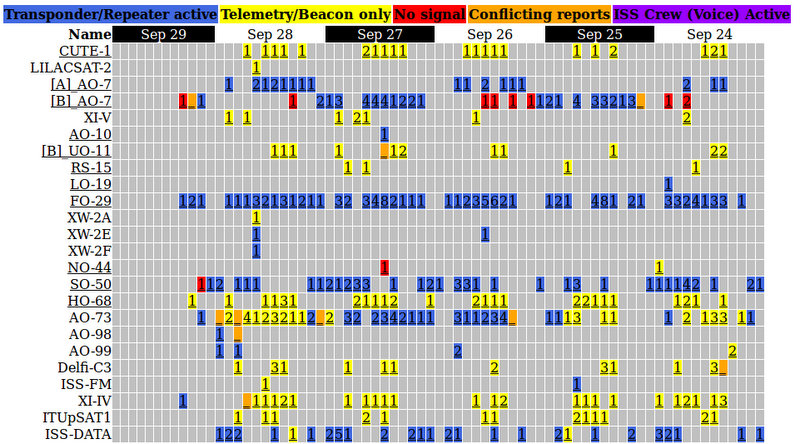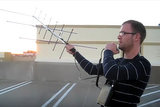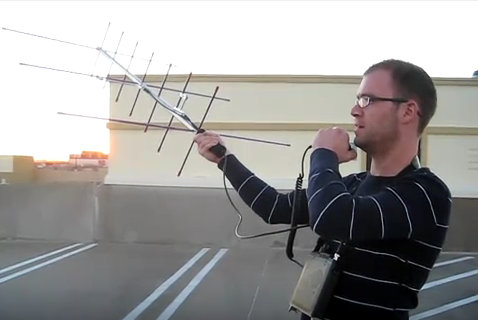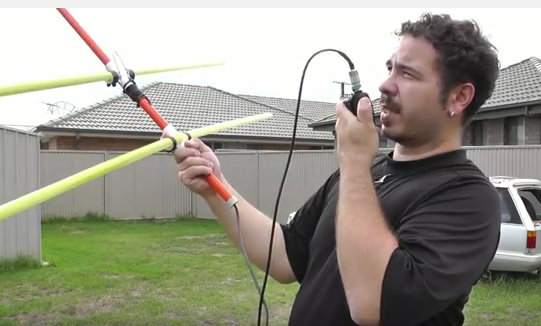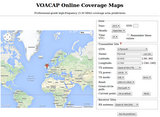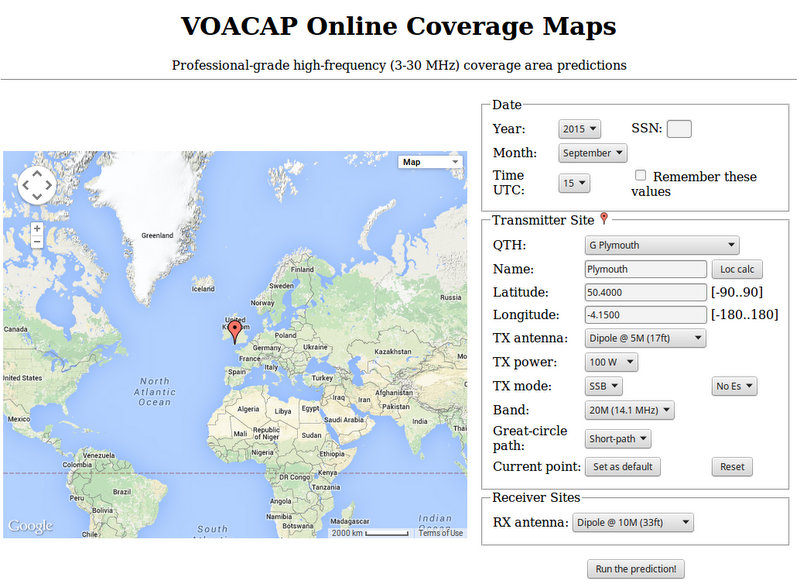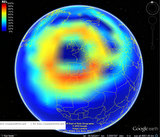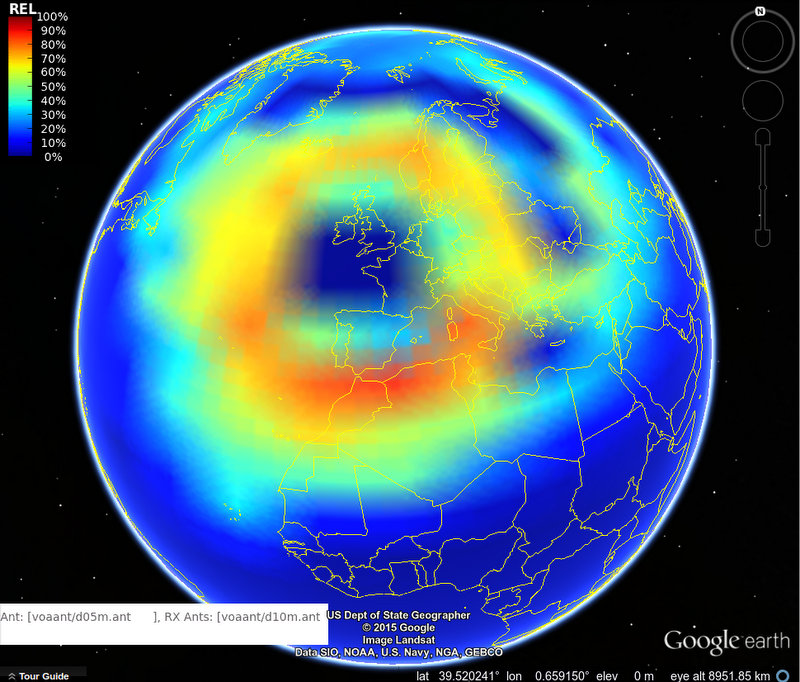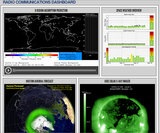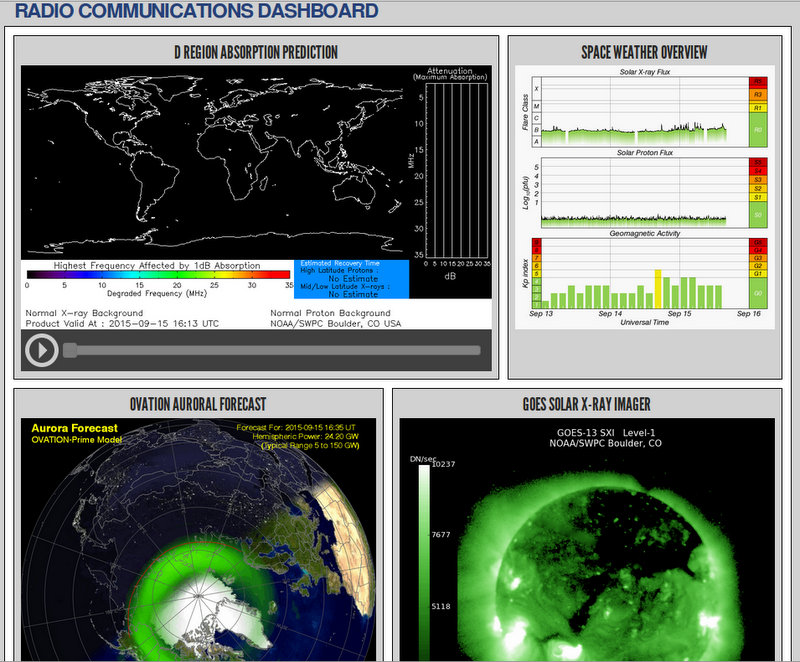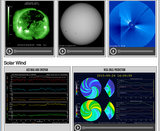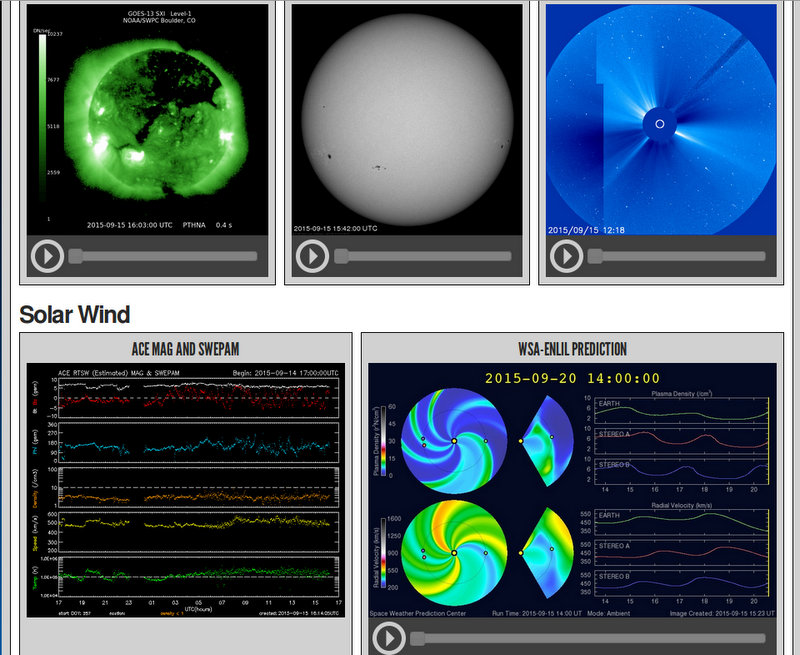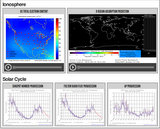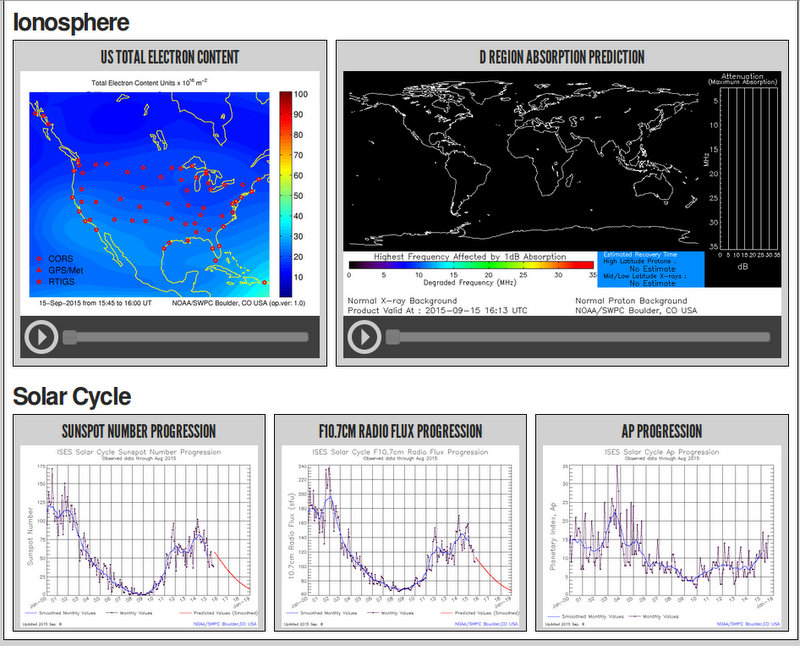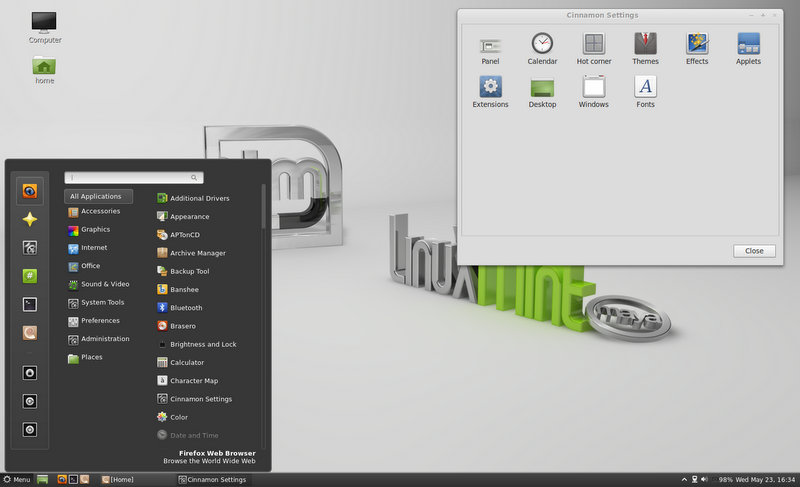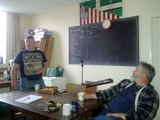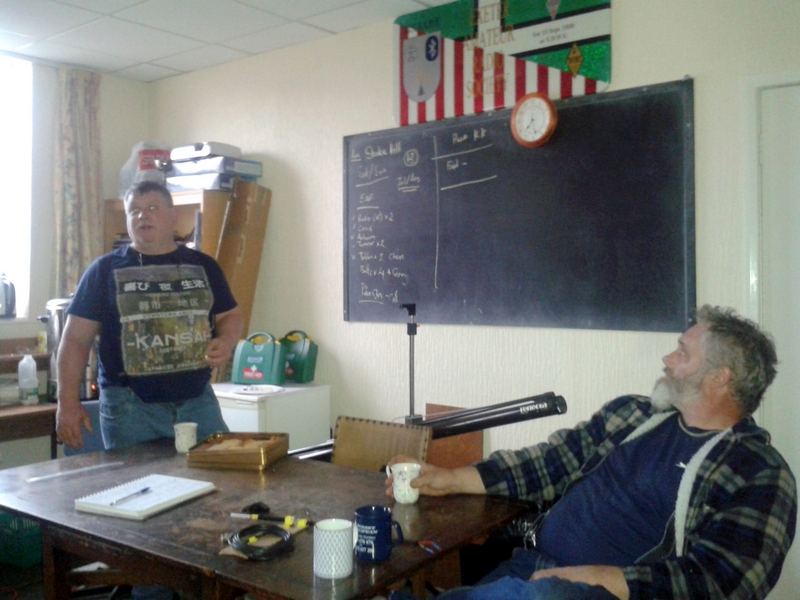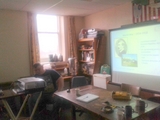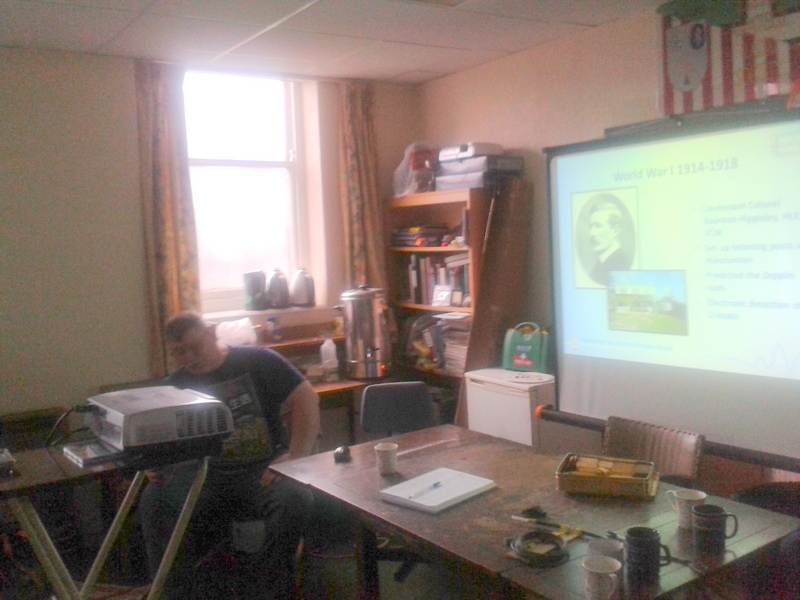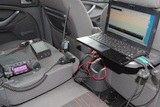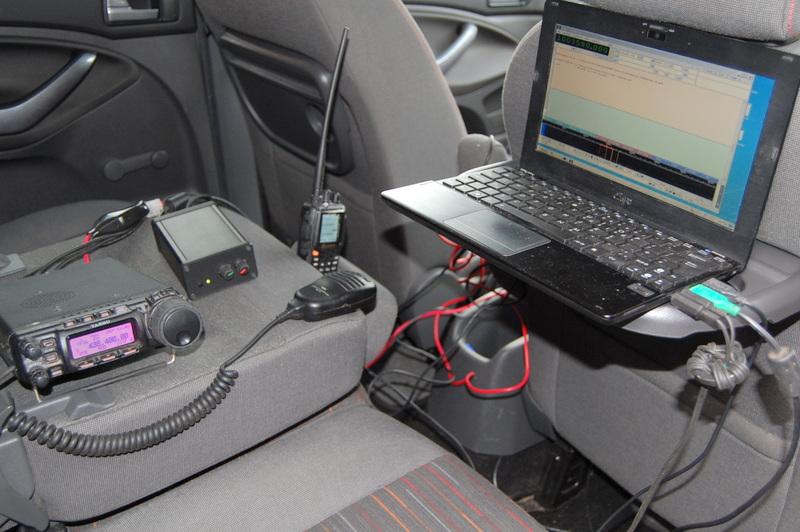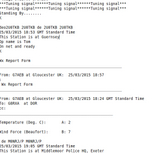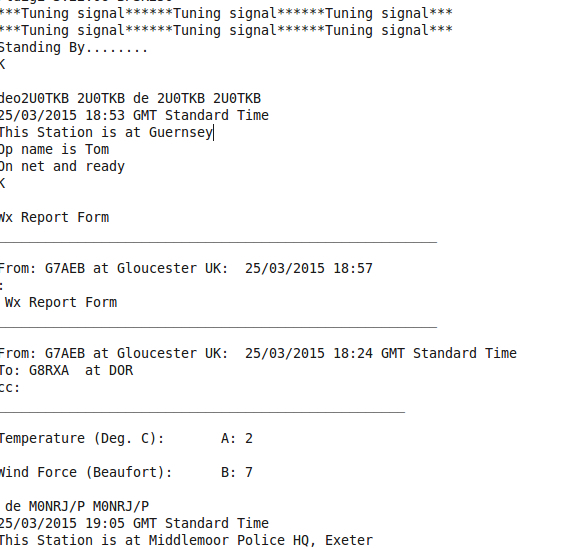
Our club on Youtube
Nets
Raynet
Repeaters
Training
Members only
Devon Shipping Live Map
Devon Air Traffic Live Map
Links
About us
| 14 December 2015 Congratulations to Alex M6WEK on passing his Foundation Licence examination and becoming the youngest ever member of the Exeter Amateur Radio Society at just 17 years of age! Club members are now helping to contribute everything he needs to get on the air for his first net. Linden M0TCF brought in the woodwork to assemble a 2m 5 element quad beam antenna for Alex. The antenna design was from "International Antenna Collection". This well-written and clearly illustrated book provides many ideas and plans for building antennae with parts probably already in the radio shack. |
||
| Nick M0NRJ demonstrated the use of Radio Mobile to look at propagation paths for a possible VHF repeater site near Exeter. John G4AP generously brought in a festive supply of mince pies and clotted cream for club members to enjoy. Thanks John! And Alex' father Chris supplied tins of chocolate biscuits! |
| 12 December 2015 Club members gathered upstairs at Bill's restaurant in Gandy Street, Exeter, to have their first club Christmas breakfast. This was a perfect time to reflect on so much that has happened this year and to prepare for many new projects in 2016. Happy Christmas everyone! |
| 23 November 2015 It was the famous annual "Bring In Something Interesting Night" and club members did not disappoint. New ham Trevor M6TVW showed his brand new Foundation Licence and a design he had built on a PCB for a small listening bug that transmitted a signal to a domestic VHF radio. |
||
| Keith G7NBU brought in some large coils from a surplus sale that were identified by club members as being from a strange dipole antenna. Skip M0TCF provided the light entertainment with his demonstration of a camera-carrying quadcopter that cost him a whole £9! Thanks to Keith for the photos and commentary. |
16 November 2015 Linden M0TCF has alerted club members to the theft of a digital repeater and duplexer from GB7HM in northeast Wales near Wrexham. Club members are asked to watch for information about this equipment being offered for resale and to advise North Wales Police or contact Graham GW0HUS.
| 9 November 2015 EARS club member Trevor from Morchard Bishop took his Foundation exam this evening and passed. He will now be applying to Ofcom for a suitable M6 callsign. Congratulations Trevor! Nick M0NRJ set up a demonstration of a WSPR beacon station that received messages from other nodes and transmitted beacon information. |
||
| He explained how this low power all-band Weak Signal Reporting Network information can be used by radio amateurs to learn about current propagation and band openings from 160m to 23cm. Two minute time segments are used to broadcast and listen for WSPR messages around the world. A very slow 1.6 bps stream of data that encodes the transmitter callsign, locator and power level, which takes about 20 seconds to transmit. Beacons usually transmit in a two minute slot every 20 minutes. |
||
|
WSPR receiver sites decode the messages and periodically upload them to the WSPRnet where they are collated and displayed. Maps show more detail as the user zooms in on a particular area. (Select a frequency band and click on Update). Knowing a beacon's transmission power, its received power and the distance between the beacon and receiver, valuable propagation data can be charted. PCs need an accurate network time synchronization program such as Dimension to ensure accuracy of tuning into the signals at the moment they start, just after every even minute. |
26 October 2015 Club members met to discuss how soon the club may have to move to a new location and looked at the list of choices available. Chairman Keith G7NBU later issued a statement to all club members by email. It was decided to commence a GB3EW net on the second Tuesday of each month beginning in November 2015, following the success of the "EX Net" in linking club members outside of Exeter.
12 October 2015 Keith G7NBU led a discussion on relocating the club premises in two months time following the announced sale of the club existing QTH which, for the past 15 years has been at the Moose Centre. It was decided to start moving club equipment to temporary accommodation immediately and following up on our best option of a new regular meeting room by negotiating with the site owners.
Skip M0TCF presented a "Dip into the RSGB Archives" which looked at amateur radio's pioneering period from 1921-25. Nick M0NRJ gathered topics for the 2016 series of EARS meetings in our new club QTH.
8 October 2015 It is with great sadness that we have to report that Geoff M0UWD has passed away after a lengthy illness. The society's members thoughts are with his wife, Wendy, and his family at this time. We remember Geoff for setting such a high standard for electronic construction. His patient and methodical attention to detail and quality of his projects will always be a reminder of the craftsman he was. His numerous construction projects shown to the club will remain a testament to his professionalism. We will really miss his cheerful helpfulness, his dependability and generosity. |
| 28 September 2015 As Alan G1JXI was indisposed, Nick M0NRJ stepped into to talk about his experiences with amateur satellites. He recommended the use of Ham Radio Deluxe or SatPC32, to learn what satellites are viewable and the frequencies to operate on. Many other programs are available and AMSAT is a great place to start. A live status display of all active amateur satellites is very useful as there are many launches of new satellites in some months. The RSGB produces a very practical guide for beginners. |
||
He urged members to have a go by using a handy outside to listen between 145.8 and 145.9 MHz during the period of predicted passes and see the Doppler effect as the satellite approaches and departs. If they get hooked, they can move onto using the above programs to automatically apply Doppler corrections to the operating frequency as they make QSOs. Polarization rotation can be observed if a handheld Yagi is used to optimize signal strength. Accurate "Keplers" or Two Line Elements (TLE) of exact satellite path coordinates are important and should be updated every week. Don't call CQ. |
| 14 September 2015 Nick M0NRJ gave a talk on "Understanding Propagation." After reviewing fundamentals usually taken for granted, such as basics of electromagnetic field propagation from a dipole, he discussed ionization processes triggered in the the Earth's ionosphere by solar extreme ultraviolet (EUV) radiation. |
||
He explained how EUV levels were not directly measurable on Earth's surface, but monthly averaged solar flux density did correlate to monthly averaged EUV levels. Showing how this forms the basis of propagation prediction tables, he referred members to the free VOACAP prediction software and its results overlaid on Google Earth. |
||
|
NOAA's Space Weather Prediction Centre overflows with interesting live solar data showing its effect on the ionosphere. Studying the solar conditions and predicting its effect on HF propagation is more satisfying than simply using one of the popular DX spotting cluster sites that give live QSO information, because it enables the amateur to understand the science. A new live real-time band conditions website is proving to be really useful for QRP enthusiasts. |
 |
| 5 September 2015 Exeter Raynet members successfully provided radio communications for the Moor2Sea Sportive event where 1,000 cyclists rode from Haldon around Dartmoor on a choice of three different routes, the longest being 180 kms. A selection of photos show the Raynet members operating sites at Bellever Youth Hostel and Warren House Inn. |
24 August 2015 Michal M0HRJ/SQ2CFG gave a talk on Surface Mounted Technology (SMT) to club members. He showed how most common electronic components are now fabricated to this tiny scale and the bewildering variety of packages they come in. Afterwards, Pete G3ZVI and John G8XQQ tested Pete's new digital interface between his PC and a Tait transceiver. He has built three for the Exeter Raynet members to use on their events.
| 10 August 2015 The annual and now legendary Exeter Amateur Radio Club Annual BBQ was held at Keith G7NBU's "shack" under the usual beautiful skies. Special guest Sergii US2IPQ from the Ukraine, presented the club with a vintage Russian Morse key. Click here for a picture gallery of the event where Ivor G6ATJ demonstrated his latest hexacopter. |
| 27 July 2015 A mixed club meeting where several discussion threads evolved. The Exeter Raynet team discussed the provisioning of the radio communication services to the Moor2Sea Sportive race where 1,000 cyclists will be racing around Dartmoor on 5th September. Pete G3ZVI, Norman M0NJE, Keith G7NBU and John G8XQQ planned locations, frequencies, schedules and equipment. Skip M0TCF introduced visitor Sergii US2IPQ from the Ukraine and two young lads to the joys of amateur radio, encouraging them to help them study for their Foundation Licence. |
||
Pete showed Matt M0SBI and Stuart from the Exmouth Amateur Radio Society how to design a dipole and Nick M0NRJ demonstrated how to convert a retired Dell computer to the latest version Linux Mint Cinnamon using an USB memory stick and changing the boot sequence. |
| 13 July 2015 Data modes evening at the club, when members brought in their computers, transceivers and digital interfaces to learn more about Fldigi and Ham Radio Deluxe. John G8XQQ showed his homebrew interface, while Skip M0TCF and Allan G1JXI brought in the latest Signalink interface units. Many techniques were learned during the evening, such as the need to switch transceiver mode from "Digital" to "FM" when switching between bands. A valuable trick is to remember not to move the digital interface USB connection to another socket on the laptop. Doing so, forces the drivers to be reloaded and COM ports to be renumbered. |
||
Allan showed his Android version of Flmsg/Fldigi and his Bluetooth interface to the Yaesu FT-817 that offers a CAT-driven app so that the user can operate the radio completely from the Android tablet. |
||
|
The evening was so successful that members agreed a regular data net would help them understand more about how to connect, configure and operate data modes Nick M0NRJ had published a document about using the Fldigi data mode macros. It walks users through the sequence of commands needed to get the most from these invaluable shortcuts. |
| 22 June 2015 Nick M0NRJ introduced the Arduino Uno and showed how its microcontroller, the ATMega328, has been used as a telemetry encoder for the GB3EX repeater. Using the Arduino Integrated Development Environment (IDE), he showed club members the basic design process of a setup and a loop. |
||
The Arduino name for a computer program is a sketch and Nick showed how he had designed the sketch so that it would command the micro-controller to read input voltages and transmit them as a morse code sequence. New member Trevor brought in a 10 MHz magnetic loop antenna to donate to the club. Here it is being inspected by and ex-club member Bob. |
| 14 June 2015 Time for the annual Practical Wireless 2m QRP Contest and the club's participation at Christ's Cross! Skip M0TCF, Allan G1JXI and Bas G0FGE led the day, arriving early to construct the impressive antenna farm. Nick M0NRJ and Phil 2E0PCJ made up the numbers and by 10:00 the club station GX4ARE was looking for contacts. |
||
Skip and Bas soon started making contacts, anxious to beat their records from previous years. Good weather and little mud underfoot made it a really enjoyable day out. |
||
Allan set up his digital station and fired up Fldigi while Nick was the antenna rotator. Phil helped with his years of experience and detailed geographic knowledge. Within three hours a total of eleven contacts had been made, which was two up on last year and showing an annual steady increase since the club began this contest two years ago. Roll on the HF Field Day in July! |
| 8 June 2015 Allan G1JXI presented a well-researched talk about D-STAR and introduced the club to the digital audio technology, operations, repeaters, reflectors, nets and terminology used by hams. Using his Icom ID-51e handy he explained how D-STAR is the ideal solution for hams who live in restricted environments where large aerials are not possible. He showed his Digital Voice Access Point and explained how its Raspberry Pi provide the data routing to the Echolink-like D-STAR network. Dongles are a low-cost introduction to D-STAR. Once registered, new users can follow many internet resources to learn more. |
||
Allan then amazed members with his HF QRP kit fitted to two custom sponge-sculptured shipping storage cases. They contained collapsible and foldable versions of a Yaesu-FT-817, ATU, Signalink, tablet keyboard, Wifi extender, aerials and counterpoises for all major HF bands. And there was a catapult for antenna deployment in awkward spots! |
||
Skip M0TCF confirmed the PW QRP Day will be run from Christ's Cross next Sunday from 10:00 a.m. to 4:00 p.m. Everyone is welcome to attend and participate! Trevor from Morchard Bishop introduced himself to the club and will return next week to officially join and commence his Foundation Licence studies. |
| 6 June 2015 Congratulations to Skip M0TCF and Matt M0SBI on being awarded their Full Licences and new callsigns! Matt only became 2E0DHX in January, so thanks for showing us that you can do two licences in five months. Well done both of you! |
11 May 2015 Skip 2E0TGT hosted a planning session for club members participating in the 2m QRP Contest on 14th June 2015. He has recently acquired a low-noise mast-mounted pre-amp for pulling in weak stations. Meanwhile he is negotiating with the owner of a suitable hilltop north of Exeter as the operating position. The Practical Wireless web site has all the information needed for contestants. Some experimental antennae are available for use and all modes will be used. All club members are welcome to visit and have a go.
He then turned to the development of a club QSL card. Members assisted in selecting critical elements to be incorporated on the front: club name, callsign, location map and our date of establishment (1920). The rear of the card would contain the standard layout of QSO details.
In other business, Pete G3ZVI was elected unopposed to the position of Examinations Secretary. Congratulations Pete!
| 27 April 2015 Nick M0NRJ brought along a Raspberry Pi computer and a Banana Pi computer for comparison. He connected the computer to a Logitech camera using a USB port expander and explained how he had installed two programs that would create a motion detector and a website on which to view videos that were recorded of any items moving in the field of view. He used the "motion" and "apache2" web server packages. He showed hot to use preinstalled games such as Minecraft and programming languages such as Sonic Pi that produces synthesized music and Scratch that introduces users to robotic control. There are excellent websites to read about the Pi, build projects and learn to program. |
|
|
.He explained that the new Raspberry Pi 2 contained the anticipated improvements required for real time audio encoding, which had limited how earlier models could be used by hams for applications such as Fldigi. The newest model almost reaches the capabilities of the Banana Pi, but still does not have a built-in microphone or a SATA interface. Local Raspberry Pi user groups in Devon hold regular meetings. In Exeter, the Exeter Raspberry Jam meets in the main Library on the first Saturday of each month from 10:00 to 12:00. In Paignton, the Torbay Tech Jam meets on the second Saturday of each month at Paignton Library from 13:00 to 15:00. |
| 13 April 2015 Skip 2E0TGT led a discussion on reactivating the club call sign (GX4ARE) for an upcoming field day weekend exercise. It was unanimously decided that the area of Stoke Woods, north of Exeter would be a good place because of proximity and height. There is either a public car park or an old signal building on private ground. Skip volunteered to scout the area, locate owners, query access rights, then report back to the club. Members drew up a list of radio gear, antennas, co-ax, tables, chairs, power supply(s), lap tops that would be needed. Most were interested in taking part and preferred a weekend, such as 1200 hrs Saturday to 1200 hrs Sunday in the July/August period. John G8XQ proposed that we try and get on air with as many different modes and bands as possible - thus allowing as many members on the air at the same time and being able to sample 'new' modes in action. |
|
|
Interference, especially on the HF bands between different stations was discussed and senior members of the club felt that it would not be too much of a problem, especially if vertical and horizontal antenna arrays are used. Still to be discussed is logging and QSL cards.. Skip then took a dip into the RSGB archives again to introduce a presentation about "Amateur Radio during both world wars." On the following evening's net, Baz G0FGE revealed that his uncle had been lost during WW2 on one of the vessels mentioned during the presentation. Apparently the aircraft carrier in question had a large complement of volunteer Amateur Radio operators on-board who were working at the time trying to track German Subs. Thanks to Skip for the meeting notes and Ivor G6ATJ for the images. |
| 25 March 2015 Members of club belonging to Exeter Raynet joined the South West Raynet Inter County Exercise number 15 this afternoon. The event created a fast data network from the Channel Islands through to Gloucester. SW Raynet members set up portable talk-through repeaters on hill-tops throughout the southwest and transmitted voice and BPSK-250 encoded data over UHF and VHF repeaters to form a communications backbone for emergency services. Keith G7NBU and Nick M0NRJ operated from Nick's car adjacent to Middlemoor in Exeter. A Yaesu FT-857D is seen connected to a Digimaster Pro data interface and to a laptop running Fldigi. |
|
|
This sample of the received data in Fldigi shows data messages from Guernsey and Gloucester being passed through the unmanned GB3EX repeater at Silverton. Other talk-through sites in Bath and Dorset linked to GB3EX and onto Cornwall. Over 20 Raynet members at 13 sites made this possible and as usual, valuable lessons were learned when having to set up repeaters on battery power quickly. |
| 23 March 2015 John G8XQQ and Pete G3ZVI hosted a successful "Test Your Rig Night" at the club. Visitors Norman M0NJE and Brian M6GCH brought in transceivers that needed investigation. Brian was delighted to find that his Icom IC-7000 only had a faulty S-meter and had not developed a receiver sensitivity problem. John gave a fascinating tutorial on rig-testing, demonstrating on the club's equipment how to check a transmitter's frequency and power level and a receiver's sensitivity and selectivity. |
|
|
Pete showed how to measure the resonant frequency of a 2m antenna with an audio oscillator! Using a 3 kHz audio modulated signal he showed how a VSWR meter could detect the forward and reverse waves and display them on a dual-trace oscilloscope. Tuning up and down the band showed how the amplitude trace of the returned signal dipped at the resonant frequency. |
9 March 2015 The Exeter Amateur Radio Society held its Annual General Meeting. The existing club officers were unanimously reelected to their current positions. Congratulations to all!
Chairman: Keith G7NBU
Secretary: Skip 2E0TGT
Treasurer: John G4AP
Newsletter: Ivor G6ATJ
Training: Skip 2E0TGT
Committee members: Keith G6FXH, John G8XQQ
Publicity Officer/Webmaster: Nick M0NRJ
Afterwards Pete G3ZVI conducted a meeting about the feasibility of creating a financially independent Exeter Repeater Group with an elected committee. This met with approval from all those club members involved in the repeater construction and operation.
Allan G1JXI announced the creation of two new internet resources specially for the club. The Exeter Radio Club Forum offers web space for members to discuss net activity, training for examinations, offer items for sale and exchange views and opinions about amateur radio. Members can not only post their contributions but create new topics, so log in and discover the joy of bulletin boards!
He also introduced the Exeter Radio Club Chat Room where members can meet online and chat together in real-time. This is ideal for those moments when they cannot use the bands with their equipment, but only have the internet available. It uses standard Internet Relay Chat commands as well as a smarter point-and-click interface to get going.
| 1 March 2015 The annual Exeter Amateur Radio and Electronics Rally was held at America Hall in Pinhoe on the sunny first day of spring. |
||
Lines formed at 10 a.m. as keen amateurs and hobbyists queued for bargains. About two dozen vendors and trade stands were doing swift business in between visits to the ever-popular refreshments bar. |
||
Ivor G6ATJ and John G8XQQ ran their traditional bring-and-buy stand, while in the main hall, Henry Westlake's wife and daughter "manned" his stand. |
||
Nick M0NRJ manned a stand selling off Ivan G3YRX' shack equipment. |
| 23 February 2015 Ivor G6ATJ introduced EARS members to the exciting world of quadcopters, with a full technical explanation, practical examples and videos of their flights. He showed members the basics of aileron, rudder and throttle control using the remote control handsets and explained the use of 6-channel 2.4 GHz frequency spread spectrum technology to provide interference-free operation, even with multiple quadcopters present. Ivor covered the correct use of lithium-ion polymer batteries and showed a typical checker. A flight-time of 7 minutes is possible with a typical 24 watt-hour battery., which can amazingly provide short bursts of up to 66 amps. |
||
He explained the Civil Aviation Authority Regulations about safe flying and how the GPS and inertial motion unit sensor data is used to provide a return-to-base function if the battery goes low, radio contact is lost or the operator commands it to return. "Flyaways" are still common, where the quadcopter unexpectedly leaves the operating zone. GPS operates on 1.5 GHz so it does not interfere with the 2.4 GHz remote control channel. Unexpected solar outbursts, indicated by the planetary K index are now checked by operators as they could trigger these events. He showed videos he had made of his flights in Devon but they were topped by a video of an amazing acrobatic display, which illustrates why this is such a compulsive hobby. |
| 9 February 2015 Pete G3ZVI presented a very practical talk entitled "Filters for the Faint-hearted". With great simplicity and clarity, he described the evolution of low pass, high pass, band pass and band stop filters. Amazingly, he did not use any mathematics or foreign words! |
||
He introduced many amateur radio scenarios requiring filters, such as power supplies, transmitter harmonics, public mobile radio interference and poorly designed consumer appliances. He brought along a wide selection of filters to solve issues of interference, some of which he had made himself. He explained how each one evolved, how it was constructed and how it could be tuned. |
||
Afterwards club members were able to look closely at the filters and admire the craftsmanship. Pete recommended Metalwork Solutions Ltd as a good local Exeter manufacturer of quality filter chassis cases. Also 1st Choice Finishes in Exeter are a very reliable and reputable company for specialized painting and coating jobs. |
| 26 January 2015 Skip 2E0TGT presented a well-researched lecture and demonstration about "First Aid in the Shack". With videos of techniques and procedures, he showed club members how to react to finding a person lying unconscious. He showed how to do cardiopulmonary resuscitation (CPR) and how to use a defibrillator. The "volunteer Anne" showed great tolerance as Skip demonstrated his training and professionalism in the field of first aid. Members are now aware of Danger Response Safety - Airway Breathing Circulation, remembered as "DRS ABC" and were introduced to a host of medical mnemonics. |
||
"Anne" recover quickly from mouth-to-mouth resuscitation after Skip taught the rules of 2 breathes and 30 chest presses, repeated until qualified medical help arrives. St. John Ambulance has many training videos for these procedures. Matt M6ULP announced his new callsign 2E0DHX following his successful Intermediate examination. |
| 12 January 2015 Pete G3ZVI and John G8XQQ presented a 4m promotion night, encouraging club members to become active on 70 MHz. Pete recommended registering with the main 4m website to learn about recommended transceivers and aerials. Pete demonstrated how he manufactured mobile 4m centre-loaded aerials using readily available components and his kitchen oven after it was cooling down following his XYL baking cakes. |
||
He recommended ex-PMR equipment from Storno, Tait and Ascom costing about £30 and aerials from Sirio for £60. Wouxun now make handies and he has manufactured better antenna for them with 10 dB more gain. He demonstrated a Parrot simplex repeater operating on the band that gave 60 seconds for an over. He recommended Metals SW at Heathfield as a good local supplier of aluminium for building one's own antennas. John emphasized that 4m is a very cheap band to get on and hence more fun. Surprise Sporadic-E propagation makes the band more interesting than 2m. |
6 January 2015 Pete G3ZVI draws our attention to news that consumers could be prosecuted if their home power line network adaptors cause interference to radio users. GCHQ has been lobbying for action because their monitoring capability of international military radio signals is diminished by this interference. However, the amateur radio community is delighted that Ofcom is finally going to enforce the EU directive about power line adaptor radio frequency emissions.
